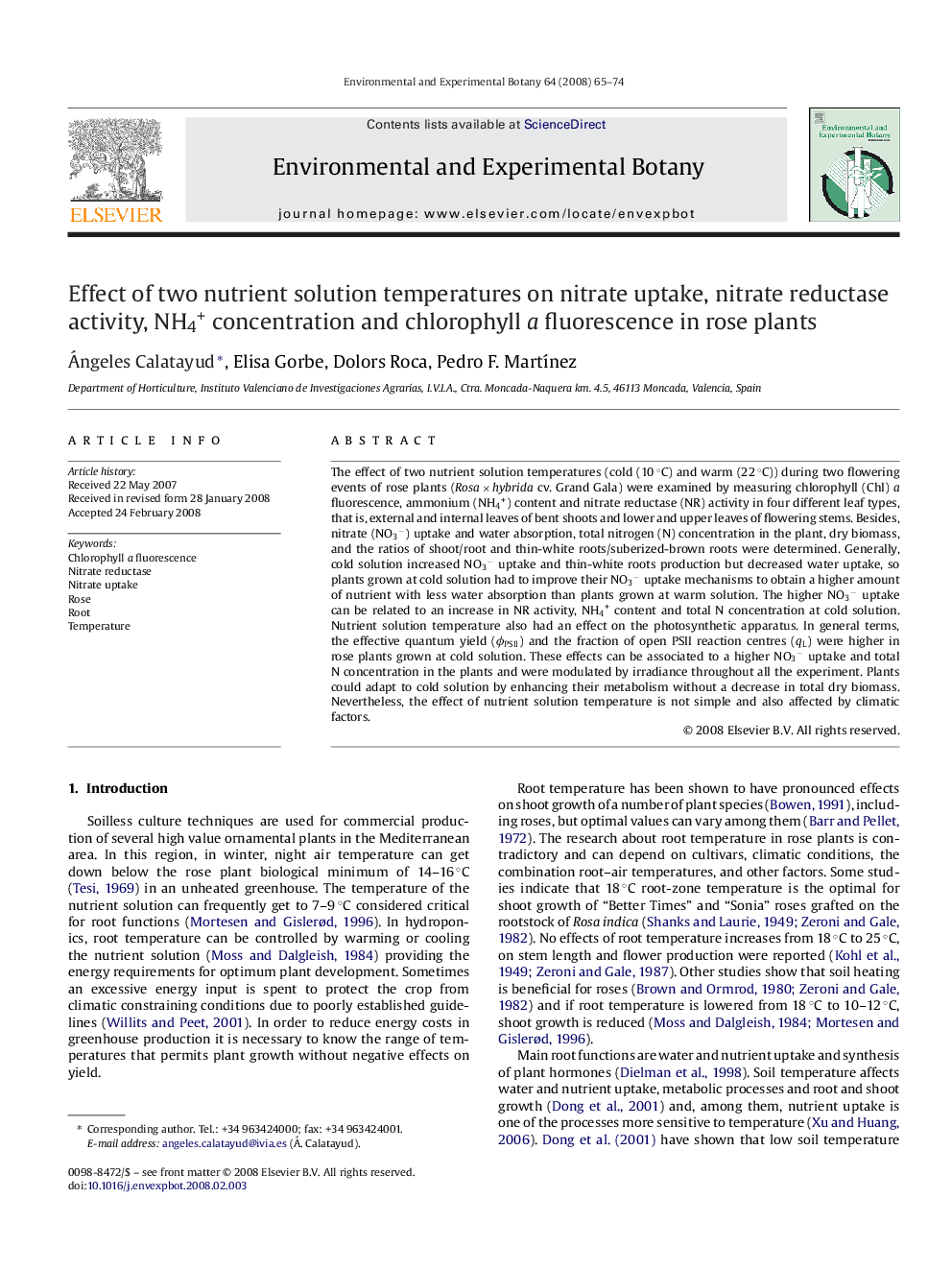| Article ID | Journal | Published Year | Pages | File Type |
|---|---|---|---|---|
| 4555163 | Environmental and Experimental Botany | 2008 | 10 Pages |
The effect of two nutrient solution temperatures (cold (10 °C) and warm (22 °C)) during two flowering events of rose plants (Rosa × hybrida cv. Grand Gala) were examined by measuring chlorophyll (Chl) a fluorescence, ammonium (NH4+) content and nitrate reductase (NR) activity in four different leaf types, that is, external and internal leaves of bent shoots and lower and upper leaves of flowering stems. Besides, nitrate (NO3−) uptake and water absorption, total nitrogen (N) concentration in the plant, dry biomass, and the ratios of shoot/root and thin-white roots/suberized-brown roots were determined. Generally, cold solution increased NO3− uptake and thin-white roots production but decreased water uptake, so plants grown at cold solution had to improve their NO3− uptake mechanisms to obtain a higher amount of nutrient with less water absorption than plants grown at warm solution. The higher NO3− uptake can be related to an increase in NR activity, NH4+ content and total N concentration at cold solution. Nutrient solution temperature also had an effect on the photosynthetic apparatus. In general terms, the effective quantum yield (ϕPSII) and the fraction of open PSII reaction centres (qL) were higher in rose plants grown at cold solution. These effects can be associated to a higher NO3− uptake and total N concentration in the plants and were modulated by irradiance throughout all the experiment. Plants could adapt to cold solution by enhancing their metabolism without a decrease in total dry biomass. Nevertheless, the effect of nutrient solution temperature is not simple and also affected by climatic factors.
